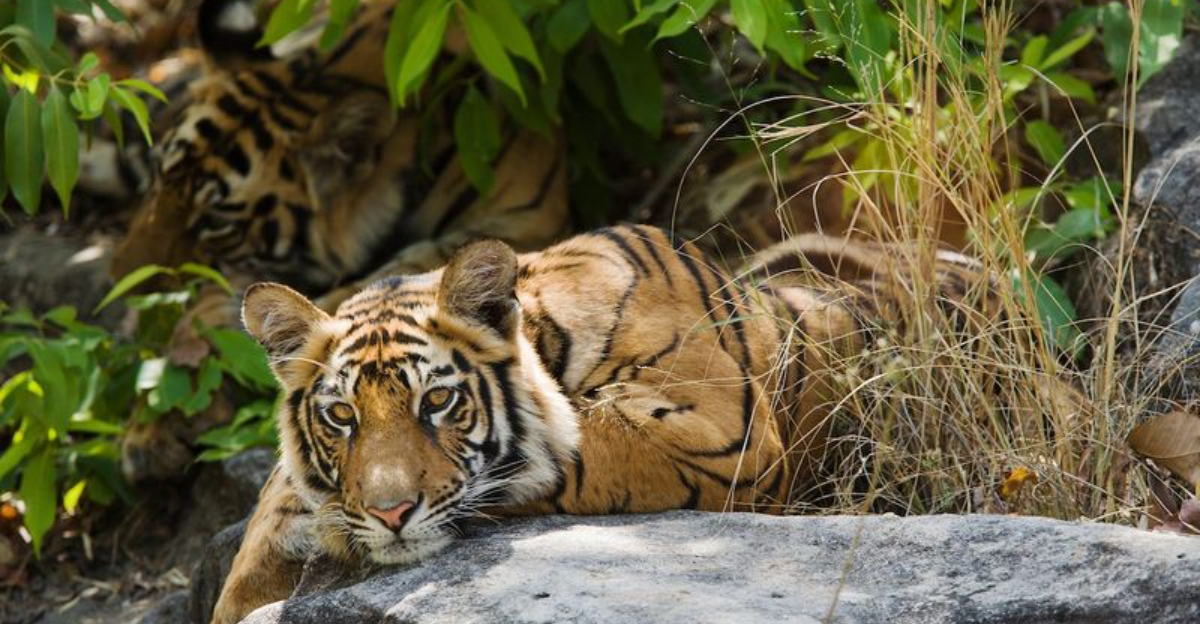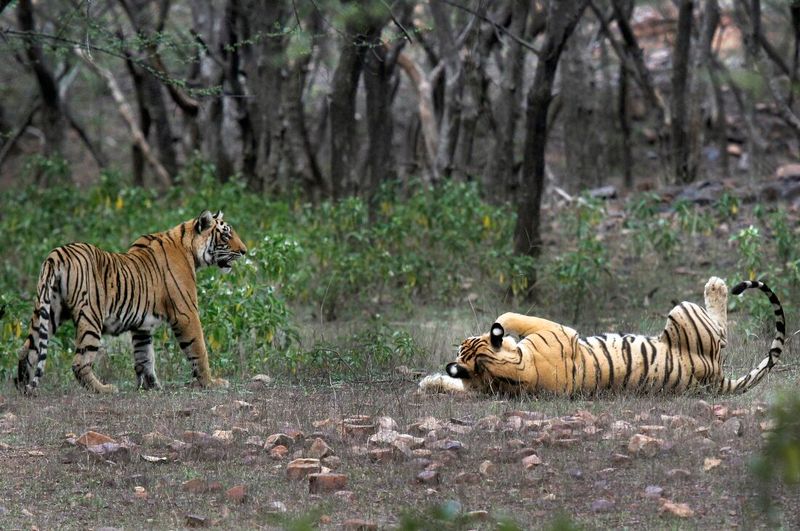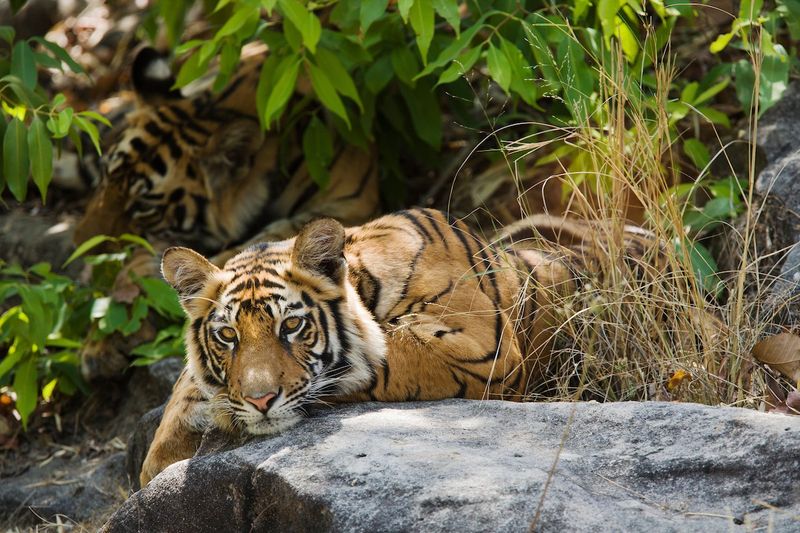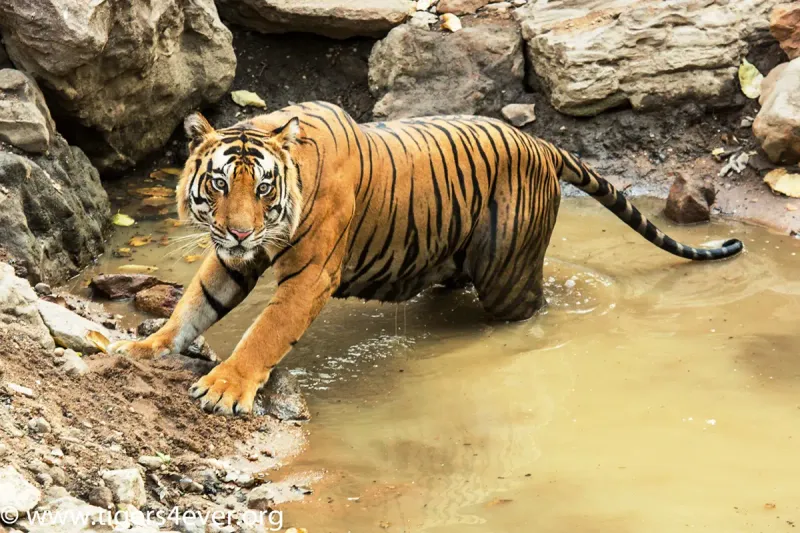6 Smart Strategies That Helped India Successfully Double Its Tiger Population

India’s remarkable achievement in doubling its tiger population over recent years stands as a testament to the nation’s commitment to wildlife conservation.
This accomplishment is not only a matter of national pride but also a shining example for other countries striving to protect endangered species.
The harmonious blend of traditional conservation techniques and modern innovations has created a vibrant sanctuary for the majestic Bengal tiger.
Today, we’ll explore unique and captivating strategies that have contributed to this success, each highlighting different facets of India’s approach to tiger conservation.
1. Creating Tiger Reserves

The establishment of dedicated tiger reserves across India has been a cornerstone strategy in conservation efforts. By designating specific areas as protected habitats, India has provided tigers with safe environments to thrive free from human threats.
These reserves, such as the renowned Jim Corbett and Ranthambore, offer vast expanses where tigers can roam, hunt, and live naturally. Within these protected zones, strict regulations limit human activities, reducing the risk of poaching and habitat destruction.
The success of these reserves is evident in the flourishing tiger populations they support. The reserves also promote eco-tourism, offering visitors the chance to witness these magnificent creatures in their natural habitat.
This approach not only aids in the conservation of tigers but also boosts local economies through sustainable tourism. The model of creating tiger reserves has inspired other countries to adopt similar measures, showcasing India’s leadership in wildlife conservation.
2. Anti-Poaching Initiatives

India has implemented robust anti-poaching initiatives to protect its tiger population. These efforts involve deploying well-trained forest rangers equipped with modern technology to monitor tiger habitats.
Rangers patrol tirelessly, utilizing tools like drones and GPS tracking to identify and deter potential poachers. Community involvement plays a crucial role in these initiatives.
By educating local communities about the value of tigers and the importance of conservation, India fosters a culture of protection. Villagers often become the eyes and ears on the ground, reporting suspicious activities to authorities.
The collaboration between government agencies and non-profit organizations enhances the effectiveness of these initiatives. Through workshops and training programs, rangers and community members develop skills essential for safeguarding tigers.
India’s commitment to anti-poaching is a key factor in the country’s success in doubling its tiger population.
3. Habitat Restoration Projects

Restoring habitats is pivotal in India’s strategy to double its tiger population. Degradation of forests has long been a challenge, threatening the natural habitats essential for tigers.
India has launched extensive habitat restoration projects to combat this issue, focusing on reforestation and the revival of native plant species. These projects involve planting indigenous trees that support not just tigers but the entire ecosystem.
By restoring these habitats, India ensures that tigers have ample space to hunt and breed, creating a balanced environment where flora and fauna flourish together. Collaboration with local communities enhances these efforts, as residents participate in restoration activities.
This inclusive approach fosters a sense of stewardship and responsibility for the environment. Through habitat restoration, India strengthens the foundational aspects of conservation, supporting a thriving tiger population.
4. Community Involvement

Community involvement serves as a pillar in India’s tiger conservation success. By engaging local communities in conservation efforts, India builds a network of support that extends beyond governmental and non-profit organizations.
Villagers often have intrinsic knowledge of the local ecosystem, making them invaluable allies in monitoring and protection efforts. Educational programs raise awareness about the importance of tiger conservation, empowering communities to take action.
Schools and local organizations conduct workshops to teach about ecological balance and the role of tigers in maintaining it. This education fosters a culture of respect and admiration for these majestic creatures.
In return, conservation efforts provide economic benefits to communities through initiatives like eco-tourism, ensuring that local populations have a vested interest in preserving tiger habitats.
This symbiotic relationship strengthens conservation efforts, making communities active participants in the quest to protect India’s tigers.
5. Technological Advancements

Technological advancements have revolutionized tiger conservation in India. The use of modern technology such as satellite tracking and camera traps allows for precise monitoring of tiger movements and behavior.
These tools provide invaluable data that helps conservationists make informed decisions regarding habitat protection and management. Camera traps, strategically placed throughout tiger reserves, capture images and videos of tigers in their natural habitats.
This non-invasive method of observation allows for detailed studies of tiger populations without disturbing them. Satellite tracking provides real-time information about tiger movements, enabling quick responses to potential threats.
These technological tools are complemented by data analysis software, which helps scientists detect patterns and predict future trends in tiger populations. This innovative approach enhances traditional conservation methods, ensuring that India’s strategies are both effective and sustainable.
The seamless integration of technology into conservation efforts exemplifies India’s commitment to preserving its tiger heritage.
6. Government Policies

Strong government policies have played a vital role in India’s tiger conservation success. The government has enacted stringent wildlife protection laws that make poaching a serious offense, with severe penalties for violators.
These laws serve as a deterrent, reducing illegal hunting activities and protecting tiger populations. In addition to legal measures, the government has launched initiatives like Project Tiger, which focuses on habitat preservation and anti-poaching efforts.
Adequate funding and resources are allocated to ensure the success of these programs. Government agencies work closely with non-profit organizations and local communities to implement these policies effectively.
The commitment of the Indian government is evident in its continuous efforts to adapt and enhance conservation strategies. By prioritizing wildlife protection in national agendas, India sets a precedent for other nations, showcasing the power of policy in effecting meaningful change for tiger conservation.






